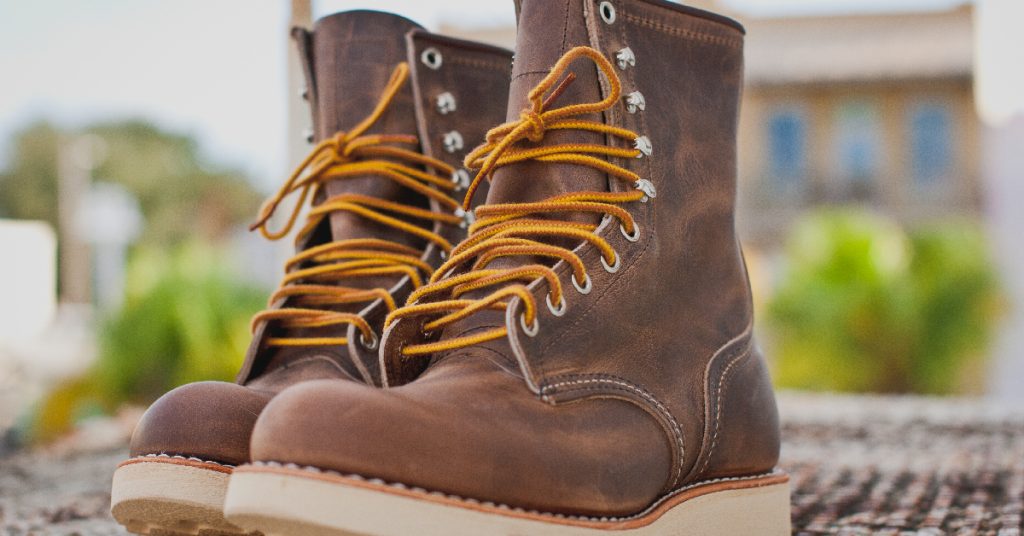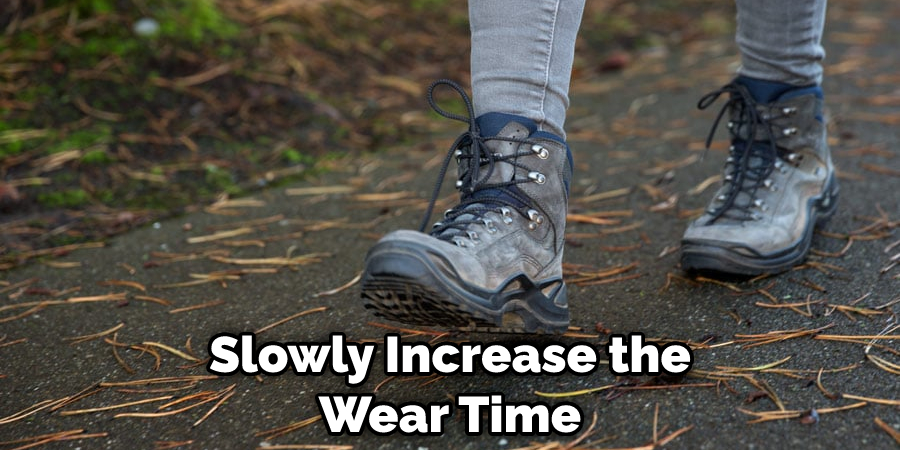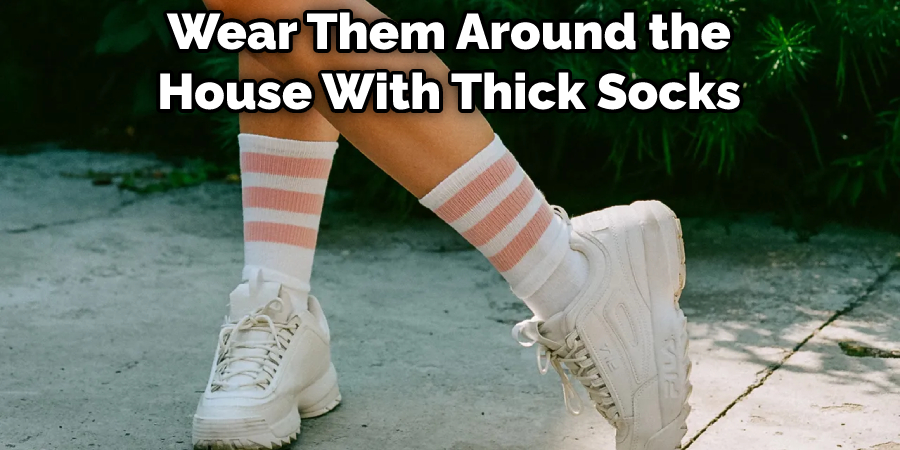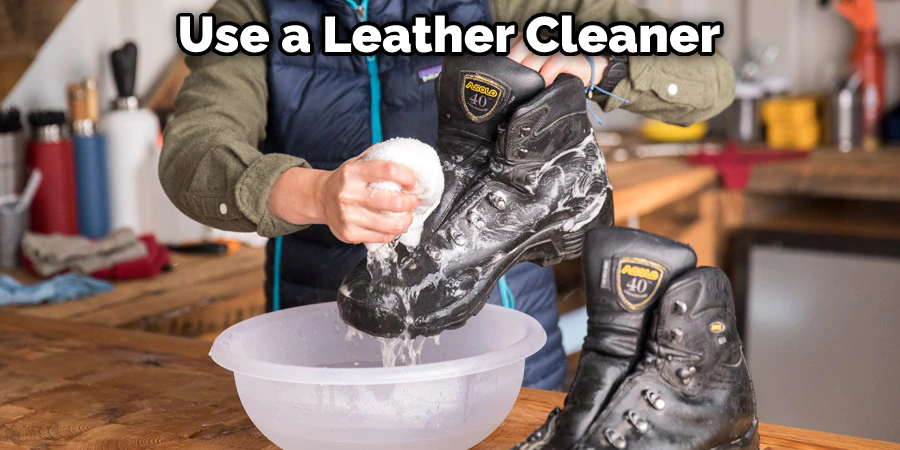There’s nothing better than a new pair of work boots until you have to break them in. Unfortunately, many people struggle with how to make work boots more comfortable. Luckily, there are some things you can do to help soften the blow. This blog post will explore tips and tricks for making those hard-working boots feel like they were made just for you. So, whether your feet are used to being on the clock, read on for the best way to make work boots feel like sneakers.

Summary: Make work boots more comfortable by choosing the right socks that provide adequate support and cushioning. Next, consider purchasing insoles that provide extra comfort and support. Break in your boots by initially wearing them for shorter periods and gradually increasing the time. Ensure that your boots fit correctly and are not too tight or loose.
Why Work Boots Are So Uncomfortable
There are a few reasons why work boots can be so uncomfortable, including:
The Stiff Materials They’re Made of:
Work boots are usually made from tough, stiff leather or rubber. This is to protect your feet from getting hurt on the job. However, these materials can also make your feet sore and uncomfortable. In addition, it can take some time for your feet to get used to them.
They’re Not Meant for Walking:
Work boots are designed for working, not walking. This means they might not have the support and cushioning your sneakers have. This can tire your feet after walking around in them all day. It can also lead to foot problems like plantar fasciitis.
They’re Not Always the Right Size:
Work boots often come in whole sizes only, making it hard to find a pair that fits just right. If they’re too big, they can rub and cause blisters. If they’re too small, they can be even more uncomfortable and cause cramping and pinching. Finding a pair that fits well is important to avoid these problems.
They’re Not Usually Designed for Comfort:
Most work boots are designed for function, not comfort. This means they might not have features like padding or arch support that would make them more comfortable to wear. It’s important to look for features like these when shopping for work boots to ensure you’re getting a pair that will be comfortable to wear.

Why Its Important to Make Work Boots More Comfortable
There are a few reasons why it’s important to make work boots more comfortable, including:
You’ll Be More Productive:
If you’re uncomfortable, you’re not going to be as productive as you could be. This is especially true if you’re wearing work boots that are too small or too big. Making sure your work boots fit well and are comfortable will help you be more productive on the job.
You’ll Be Less Likely to Get Injured:
If you’re not comfortable, you’re more likely to get injured. This is because you’re more likely to trip or fall if you’re not used to walking in your work boots. You’re also more likely to get sore feet, which can lead to foot problems like plantar fasciitis. Making sure your work boots are comfortable will help you avoid these injuries.
You’ll Be More Likely to Wear Them:
If you’re not comfortable, you’re less likely to want to wear your work boots. This is a problem because you need to wear them to be safe on the job. So if you’re not comfortable, try to find a way to make them more comfortable. This way, you’ll be more likely to wear them and stay safe on the job.

You’ll Be More Likely to Take Care of Them:
If you’re uncomfortable, you’re also less likely to take care of your work boots. This is a problem because you need to care for them to make them last longer. So if you’re not comfortable, try to find a way to make them more comfortable. This way, you’ll be more likely to take care of them, and they’ll last longer.
15 Effective Ways How to Make Work Boots More Comfortable
1. Wear the Right Socks:
Wearing the right socks can make a big difference in how comfortable your work boots are. Look for socks that are made from moisture-wicking materials. This will help keep your feet dry and prevent blisters. You might also want to try wearing two pairs of socks. This can help fill up any extra space in your work boots and prevent them from rubbings.
2. Wear the Right Size:
As mentioned above, work boots often come in whole sizes only. This can make it hard to find a pair that fits just right. If your work boots are too big, they can rub and cause blisters. If they’re too small, they can be even more uncomfortable and cause cramping and pinching. Finding a pair that fits well is important to avoid these problems.
3. Break Them in:
Breaking your work boots is important if you want them to be comfortable. Start by wearing them around the house for a few hours. Then, start wearing them to work for a few hours. Then, slowly increase the time you wear them until you’re comfortable wearing them all day.
You Can Check It Out to Dry Work Boots

4. Add an Insole:
If your work boots don’t have an insole, you might want to consider adding one. Insoles can provide support and cushioning to make your work boots more comfortable. You can find insoles at most shoe stores or online.
5. Add an Orthotic:
If you have foot problems, you might consider adding an orthotic to your work boots. Orthotics are devices that can be worn inside your shoes to support your feet. It’s important to see a doctor or podiatrist before purchasing an orthotic.
6. Lace Them Properly:
Lacing your work boots properly can also make them more comfortable. Ensure the laces are tight enough to provide support but not so tight that they’re uncomfortable. You might also want to try lacing them in a different pattern. This can help relieve pressure on certain areas of your feet.
7. Stretch Them Out:
If your work boots are too tight, you can try stretching them out. There are a few different ways to do this. One is to wear them around the house with thick socks. Another is to use a shoe stretcher. You can find shoe stretchers at most shoe stores or online. It’s important to be careful when stretching your work boots. You don’t want to stretch them too much, or you could damage them.

8. Condition Them Regularly:
Regularly conditioning your work boots can also help make them more comfortable. This will help keep the leather soft and pliable. It will also help prevent it from drying out and cracking. You can find leather conditioner at most shoe stores or online. It’s important to read the instructions before using it.
9. Rotate Them Regularly:
If you wear your work boots daily, it’s important to rotate them regularly. This will help them last longer and stay more comfortable. It’s a good idea to have two or three pairs of work boots and rotate them every few days. If you only have one pair, you can try wearing them every other day.
10. Let Them Air Out:
After wearing your work boots all day, you must let them air out. This will help prevent them from getting too sweaty and smelly. You can do this by taking them off as soon as you get home and letting them sit in a well-ventilated area. If you don’t have time to do this, you can try putting them in the freezer overnight. This will kill any bacteria that might be causing the odor.
11. Clean Them Regularly:
Cleaning your work boots regularly is also important. This will help remove any dirt, debris, or salt that might be causing them to smell. You can clean them with a damp cloth or brush. You can also use a leather cleaner if they’re made of leather. Again, it’s important to let them dry completely before wearing them again.

12. Insulate Them in the Winter:
If you live in a cold climate, you might want to consider insulating your work boots in the winter. This will help keep your feet warm and dry. You can do this by adding an insulation liner or wearing thicker socks. If you don’t want to add anything to your boots, you can try wearing two pairs of socks. This will create a barrier between your feet and the cold air.
13. Ventilate Them in the Summer:
If you live in a hot climate, you might want to consider ventilating your work boots in the summer. This will help keep your feet cool and dry. You can add a ventilated liner to your boots or wear boot socks treated with a cooling gel. If you’re struggling in the heat, you can even try spraying your boots with a cooling spray.
14. Get Them Resoled When Needed:
If your work boots are starting to wear down, you might want to consider getting them resoled. This will help extend their life and make them more comfortable. You can usually get your boots resoled at a shoe repair shop.
15. Replace Them When Needed:
Eventually, your work boots will reach the end of their life. When this happens, it’s important to replace them. Wearing old, worn-out boots can be dangerous. It’s also important to make sure you’re wearing the right boots for the job.
You Can Check It Out to Keep Feet From Sweating in Work Boots
Tips and Warnings on How to Make Work Boots More Comfortable:
Tips:
- If your work boots are giving you blisters, try wearing a thicker sock or two. This will help to cushion your foot and prevent the friction that causes blisters.
- If your boots are too tight, try using a boot stretcher or going up a size. This will give you more room to wiggle your toes and prevent bunions.
- If your boots are too loose, try using a heel grip or an insole. This will help to keep your foot in place and prevent slipping.
- Always break in your boots before wearing them for long periods. This will help to prevent discomfort and pain.
- Wear your boots for shorter periods at first, and gradually increase the amount of time you wear them. This will help your feet to adjust to the new boots.
Warnings:
- Avoid wearing ill-fitting boots. This can cause serious foot problems such as blisters, bunions, and calluses.
- Do not wear your boots for more than 12 hours a day. This can lead to foot pain and fatigue.
- If you experience any pain or discomfort while wearing your boots, stop wearing them immediately and consult a doctor.
Frequently Asked Questions
What is Rated Most Comfortable Work Boot?
There are a lot of work boots on the market, but which one is rated the most comfortable?
Well, according to reviews and ratings online, the boot that is rated most comfortable is the Timberland PROdigy Work Boot. The boot is made with a synthetic mesh that provides ventilation and breathability. The boot also features a waterproof and oil-resistant finish.
Why Do My Toes Hurt in Work Boots?
There are a few potential reasons why your toes might hurt in work boots. Some of the most common culprits include tight laces, poorly constructed boot shells, and shoes that are too large or tight. By addressing these issues early on, you can help to prevent additional pain and discomfort down the line.
Tightening up your laces can not only make them more comfortable but also increase the lifespan of your footwear by preventing feet from becoming trapped within the boot. Boot shells should fit snugly around your foot without being too constricting or restrictive; this will minimize pressure points and improve breathability. Shoes that are wider at the heel or toe provide more space for air circulation which is essential for providing relief from fatigue and heatstroke-like conditions during summer months.
What is the Most Comfortable Work Boot for a Man?
The best work boot for a man depends on his individual needs and preferences. That being said, below are some of the most popular work boots for men that may be of interest to you:
- Timberland PRO Mid – This boot is designed with a waterproof and breathable membrane that makes it perfect for wet or cold weather conditions. It also features a Dura-Ace outsole for long-lasting durability.
- Dickies Work Boot – This boot is made of durable leather that is water and oil-repellent. It also has a padded collar and tongue for added comfort and a secure hook & loop closure system.
- John Deere Gator Boot – This work boot is built with waterproof and breathable materials that make it perfect for wet or cold weather conditions. It also features a slip-resistant outsole and a contoured footbed to provide extra comfort and support.
- Columbia Men’s Bushacre 4D GTX Boot – This footwear is designed with abrasion-resistant ballistic nylon upper and textured TPU midsole for enhanced stability and durability on tough surfaces. It also has a waterproof construction to keep your feet dry in wet or cold weather conditions.
What’s the Best Way to Break in New Work Boots?
There are many ways to break in new work boots, but the best way depends on your individual needs. Some people like to wear them for a short period of time and gradually increase their wearing time as they get used to them. Others may prefer to immerse themselves in their boots from the start by walking or running in them frequently. Ultimately, it is important that you find a method that works for you and allows you also for proper foot health and mobility during the breaking-in process.
You should always avoid putting your feet into wet shoes or boots; this can cause serious harm both physically and emotionally.
Conclusion
So, there you have it – a few tips on how to make work boots more comfortable. Hopefully, these tips will help you the next time you’re breaking in a new pair of boots or just trying to get through a long day at work. Remember, a little extra care and attention can go a long way when it comes to your comfort.

